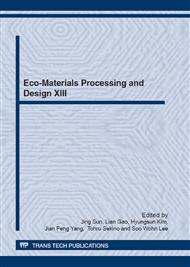p.249
p.255
p.261
p.265
p.269
p.274
p.278
p.282
p.287
Shot Peening Characteristics of Cold-Rolled Mo Sheet
Abstract:
The commercial pure Mo sheet was shot peened to increase high-temperature mechanical and thermal resistance. Shot peenining was conducted on the surface of cold-rolled Mo sheet with 0.4MPa of shot pressure. The hardness of bcc Mo sheet was increased with increase of shot peening time. Surface hardenss is gradually increased to 120s at the 0.4MPa pressure, but the profiles become almost flat at the prolonged time. The grains were deformed and work hardened in the surface layer. The surface roughness was also increased with peening time. The grain size of shot-peened Mo sheet was smaller than that of cold-rolled Mo sheet in the all recrystallization temperature range. The reason for this could be a larger density of nucleation sites caused by the higher surface deformation of shot-peened Mo sheet. Mo2C carbide phase was analyzed on the surface of recrystallized Mo sheet at the secondary recrystallization temperature range. It was considered that molybdenum carbide was formed due to the evaporation of graphite heating element in the hot-zone furnace. From this study, shot peening of Mo sheet could be a good cold work hardening method to improve high-temperature mechanical and thermal resistance properties.
Info:
Periodical:
Pages:
269-273
Citation:
Online since:
June 2012
Authors:
Keywords:
Price:
Сopyright:
© 2012 Trans Tech Publications Ltd. All Rights Reserved
Share:
Citation:


